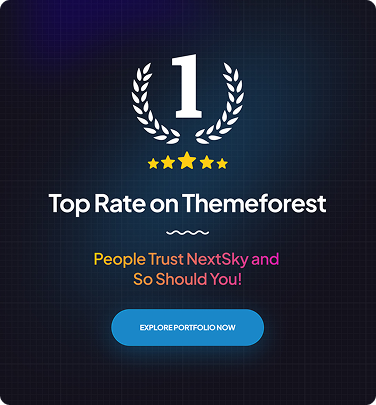What is Shopify? All Information About The Platform from A-Z
Table of Contents Hide
Shopify has revolutionized the way businesses operate online, serving over 5.6 million stores worldwide. Whether you're a startup or an established brand expanding globally, Shopify offers an all-in-one e-commerce platform that simplifies everything from product management to secure payments. In this article, NextSky explores what is Shopify, how it works, and whether it's the right fit for your business.
What is Shopify?
Shopify is a cloud-based e-commerce platform that enables anyone to create and manage an online store without needing coding or server management skills. Launched in 2006 in Canada by Tobias Lütke, Shopify began as a solution for selling snowboards and has grown into a global powerhouse. Operating on a Software-as-a-Service (SaaS) model, users pay a monthly or annual subscription to access robust selling tools, while Shopify handles hosting, security, system updates, and scalability on its cloud infrastructure.

How does Shopify work?
Shopify operates as a SaaS platform, hosting your entire store on its powerful, optimized servers. All technical aspects are managed by Shopify, allowing you to focus on building your website and growing your business with standout features like:
- Store creation and customization: Choose from free or paid themes and design your storefront with an intuitive drag-and-drop editor. All Shopify themes are mobile-optimized, fast-loading, and support custom domains, ensuring a professional appearance from the start.
- Product and inventory management: Sell unlimited products with up to 100 variants per item. Track inventory in real-time, sync across multiple channels, and automate order processing and shipping labels. Integration with USPS, FedEx, and DHL can save up to 88% on shipping costs.
- Payments and checkout: Enable Shopify Payments for credit card processing (fees: 2.9% + 30¢) or connect to over 100 gateways, including PayPal and Stripe. Shop Pay offers fast, secure, one-page checkouts. Shopify is PCI Level 1 compliant and offers free SSL certificates, ensuring the security of transaction data.
- Multi-channel selling: Expand your reach by selling on your website, social media platforms (such as Instagram and Facebook), marketplaces (like Amazon and eBay), or in-person through Shopify's POS system. All orders, customers, and inventory are managed from a single dashboard for streamlined operations.
- Marketing and analytics: Built-in tools optimize SEO, email marketing, abandoned cart recovery, and detailed reporting. The Shopify App Store offers thousands of apps, ranging from AI-driven product recommendations to automated marketing, which enhance customer experiences and drive sustainable growth.

What is Shopify pricing? (Latest update)
Shopify offers flexible subscription options, starting at just $1 per month for the first three months. Opting for annual plans can help you save even more. Below is a concise overview of the latest pricing and essential features:
| Plan | Price (Annual) | Transaction Fees | Key Features | Best For |
|---|---|---|---|---|
| Shopify Basic | $19/month | 2% (third-party) | - 10 inventory locations - 24/7 chat support - In-person/phone POS sales | Individuals and solopreneurs starting online businesses |
| Grow | $49/month | 1% (third-party) | - 10 inventory locations - 24/7 chat support - 5 staff accounts - POS | Small businesses with teams scaling operations |
| Shopify Advanced | $299/month | 0.6% (third-party) | - 10 inventory locations - Advanced 24/7 support - 15 staff accounts - Localized stores - POS | Growing businesses needing advanced reporting and performance |
| Shopify Plus | $2,300/month (3-year contract) | Competitive for high-volume | - 200 inventory locations - Priority 24/7 phone support - Unlimited staff - Fully custom checkout - 200 POS Pro locations - Wholesale/B2B | Large enterprises needing customization and scalability |
Note: Transaction fees may vary depending on the payment gateway you use. Shopify Payments does not charge transaction fees. However, if you choose a third-party payment provider, additional fees may apply. For the most up-to-date and detailed information, please visit the Shopify Prices page directly for the fastest and most thorough advice!
What are the key features of Shopify?
Shopify’s strength lies in its comprehensive, user-friendly, and robust feature set, catering to both beginners and large enterprises. Highlights include:
- Website builder and themes: Over 200 free and paid themes, customizable via drag-and-drop or Shopify Magic (AI) for professional product descriptions.
- Inventory and order management: Real-time inventory tracking, automated order processing, and abandoned cart email reminders save time and boost conversions.
- Flexible payments: Shopify Payments (no extra transaction fees) and Shop Pay for one-tap checkout, plus multi-currency and global gateway support.
- Marketing tools: SEO optimization, discount codes, email campaigns, and social media integrations (Facebook, Instagram, TikTok) for effective promotion.
- Analytics and reporting: Detailed insights on revenue, traffic, and customer behavior, with exportable data for deeper analysis or BI tool integration.
- POS integration: Unifies online and in-store sales, managing inventory and revenue on one platform.
- App ecosystem: Over 8,000 apps in the Shopify App Store, from dropshipping (Oberlo) to SEO and marketing automation, tailored to your needs.
- Security and compliance: PCI DSS compliance, free SSL certificates, and smart fraud detection ensure safe data and transactions.
What are the pros and cons of Shopify?
| Pros | Cons |
|---|---|
| Quick setup, no technical skills needed, easier than WooCommerce or custom code | Transaction fees (0.5–2%) if not using Shopify Payments |
| Sells nearly anything: physical, digital, services, subscriptions, dropshipping | App costs can add up when scaling features |
| Built-in SEO, marketing, AI, and personalized shopping experiences | Blog functionality less robust than WordPress |
| Supports 175+ countries, multi-language, and localized payments | Small businesses typically spend $50–$200/month, but worth the stability |
| Revenue from subscriptions, payments, and apps fuels continuous growth |
How to start selling on Shopify
Step 1: Sign up for a free 3-day trial
For beginners, Shopify's 3-day free trial allows you to explore the interface, test features, and build your store without requiring a credit card. Here's how to start:
- Visit Shopify's homepage and click "Start Free Trial."

- Enter your email address and store name (this will become your temporary URL).
- Please answer a few questions about your business type, then select I'm done.
- Verify your email for added security.
- Access the Shopify Admin to customize your store, add products, and manage your store.
Step 2: Add products to Shopify
If you don't have products yet, find inspiration from trending items using apps like Oberlo or tools like Google Trends. To add products:
- In Shopify Admin, select Products from the left sidebar.
- Click Add product in the top-right corner.
- Enter details: name, description, price, SKU, images, videos, or visuals to make products stand out.
- Review and click Save product.

Expert tip: Compelling descriptions and sharp images significantly boost conversion rates.
Step 3: Customize your store's appearance
A visually appealing storefront builds trust, keeps customers engaged, and drives sales. To customize:
- Go to Online Store → Themes.
- Browse the Shopify Theme Store with over 200 free and paid themes.

- Select a theme, click Add theme, then Customize to edit.
- Adjust colours, fonts, banners, and layouts to match your brand identity.
Suggestion: Start with Shopify's eight free themes. Explore premium options on ThemeForest or TemplateMonster for more variety.
Step 4: Set up shipping options
Shipping is crucial to online sales, as it directly impacts the customer experience. Shopify simplifies and automates shipping processes:
- Go to Settings → Shipping and Delivery.

- Add shipping rules, print labels, and select your preferred carrier.
- Set rates based on weight, region, or offer free shipping to boost conversions.
- Save settings.
Shopify Shipping integrates with major carriers like UPS and DHL, offering discounted rates and streamlined order handling. Consider:
- Product weight and type.
- Delivery regions.
- Service options (standard, express, or free).
- Costs and profit margins per order.
Step 5: Set up payment options
Enable online payments for customers via Shopify's gateways:
- In Shopify Admin, go to Settings → Payments.

-
Choose a method:
- Shopify Payments: The default option, supporting major credit cards.
- Third-party providers include PayPal, Amazon Pay, and local gateways.
- Connect your payment account and save settings.
Top 5 successful stores with Shopify
Here are 5 typical examples along with an analysis of the factors contributing to their success:
- Fashion Nova: The brand has solidified its position as a leading online fashion brand in 2019, with over $400 million. Its strategy of leveraging social media and collaborating with celebrities, such as Cardi B, has fueled this growth.
- Gymshark: Surpassing $1 billion in revenue in 2021, Gymshark has established itself as a global sports brand. Its strength comes from its smart marketing strategy, passionate community, and seamless e-commerce scalability thanks to the Shopify platform.
- Allbirds: Thanks to innovative product designs and a compelling brand story, Allbirds has become a leader in the sustainable footwear market, with a revenue of $298 million in 2022, representing a 36% increase. Additionally, Shopify plays a crucial role in enabling the brand to easily reach global customers.
- Kylie Cosmetics: Shopify is the leverage strategy that helped Kylie Cosmetics achieve a record $1 billion in revenue within 3 years. This platform enables the brand to deploy products quickly, manage them effectively, and implement influencer marketing strategies, as well as utilize scarcity through limited collections.
- MVMT Watches: Thanks to Shopify and an innovative online sales model, MVMT Watches has transformed minimalist, affordable watches into a $100 million empire in just four years. This platform has enabled the brand to optimize its stores, manage orders, and inventory effectively, thereby targeting the right customers.
If you're considering Shopify, start by learning what is Shopify to understand how the platform works. Then explore the instructional materials on Shopify's official website, experiment with the service packages, or delve into marketing and online sales strategies to boost your Shopify store's performance. For more insights and guidance, visit Nextsky is blog to access a wealth of articles tailored to optimizing your Shopify experience.










